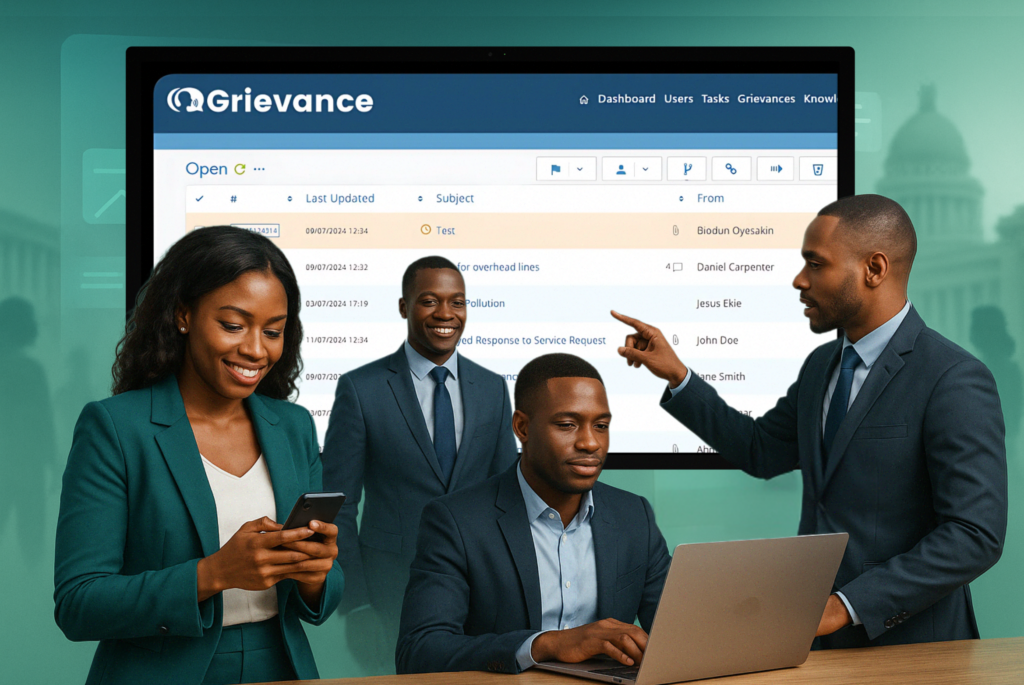Complaint Management in the Public Sector: How to Successfully Digitize It?

Complaint management (GRM – Grievance Redress Mechanism) is a strategic challenge for
the public sector. Yet, many administrations still rely on manual, time-consuming, and opaque processes. The consequences? Eroding public trust, prolonged resolution times, and
limited traceability of corrective actions.
Digitizing GRM has emerged as a critical solution to modernize administrations, enhance transparency, and improve citizen satisfaction. But how can organizations transition from traditional systems to an efficient, secure, and institutionally compliant digital mechanism?
With a structured approach and tailored tools like those offered by grievance.app, this transformation becomes both accessible and high-performing.
Why Digitize Complaint Management?
1. Modernize Public Services
Digitizing GRM replaces paper-based systems with a centralized, automated, and traceable solution, offering:
- Instant access to complaint data;
- Greater transparency for users;
- Real-time tracking of responses.
2. Improve Operational Efficiency
A digital GRM enables:
- Drastic reduction in processing times;
- Automated notifications for stakeholders;
- Trend analysis to anticipate recurring issues.
3. Strengthen Citizen Trust
With accessible, anonymous, and trackable complaint channels, institutions foster a culture of accountability and encourage civic participation.
Complaint Management: 5 Key Steps for Successful Digitization
1. Audit the Existing Mechanism
Identify:
- Pain points (e.g., delays, lack of coordination);
- Current channels (mail, email, in-person);
- Responsible parties;
- Goal: Align the digital solution with real needs.
2. Regulatory Framework and Compliance
- Adhere to GDPR, international, or local data protection standards;
- Secure data with robust protocols (encryption, restricted access);
- Align with donor requirements (World Bank, EU, etc.).
3. Choosing the Ideal Platform
Prioritize a solution like grievance.app, which offers:
- Intuitive interfaces (for citizens and staff);
- Multi-channel access (web, mobile app, for inclusivity);
- Analytics for strategic decision-making.
4. Training and Adoption
- Train staff through practical workshops.
- Raise citizen awareness via targeted campaigns.
5. Continuous Improvement
- Monitor KPIs (resolution times, success rates);
- Gather feedback and adjust features accordingly.
Essential Features of a Digitized Complaint Management System
- Simple, intuitive web forms;
- Automated ticketing with tracking numbers;
- Real-time notifications (SMS, email);
- Customizable dashboards;
- GDPR/local compliance for security;
- AI-powered complaint categorization;
- Mobile-friendly submission.
Real-World Impact
The digital GRM platform has transformed Sierra Leone’s energy sector (EDSA). Key outcomes:
- Increased Customer Satisfaction: Simplified, transparent processes significantly boosted satisfaction.
- Improved Operational Efficiency: Faster complaint resolution eliminated bottlenecks and optimized performance.
- Enhanced Transparency and Accountability: Tracking and reporting tools ensured swift, effective grievance handling.
- Foundation for Future Initiatives: The platform’s success serves as a scalable model for other sectors.
Competitive Advantages
- Higher institutional performance;
- Stronger legitimacy with citizens;
- Compliance with international standards;
- Reduced risks from unresolved grievances.
Conclusion
In today’s digital era, managing complaints through outdated, paper-based, or fragmented systems is no longer viable. Digitized complaint management is not just a trend; it’s a strategic imperative for public administrations seeking to deliver efficient services, foster citizen trust, and align with the growing expectations of technical and financial partners. By adopting digital tools, institutions can track issues in real-time, ensure transparency, and make data-driven decisions that lead to better governance and stronger accountability.
Whether you’re a public agency, a government ministry, or a donor organization, embracing a modern grievance management solution is the next step toward building responsive and citizen-centric institutions.
Ready to modernize your complaint-handling process?
Request your free demo today at grievance.app and start transforming the way you listen, respond, and improve.
FAQ – GRM Digitization and Complaint Management
Q: What is a digital GRM?
A: An online system for submitting, tracking, and resolving complaints via a secure platform.
Q: How to choose a GRM solution?
A: Opt for a compliant, intuitive, and analytics-driven platform like grievance.app.
Q: Is GRM digitization expensive?
A: No. Affordable, scalable solutions exist for public budgets.
Q: What types of complaints can a digital GRM handle?
A: Any grievance related to public service delivery: administrative delays, misconduct, perceived injustices, etc.
Q: Why digitize complaint management in the public sector?
A: Faster resolution (e.g., up to 60% reduction with digital GRM); greater citizen transparency; better resource allocation via analytics
